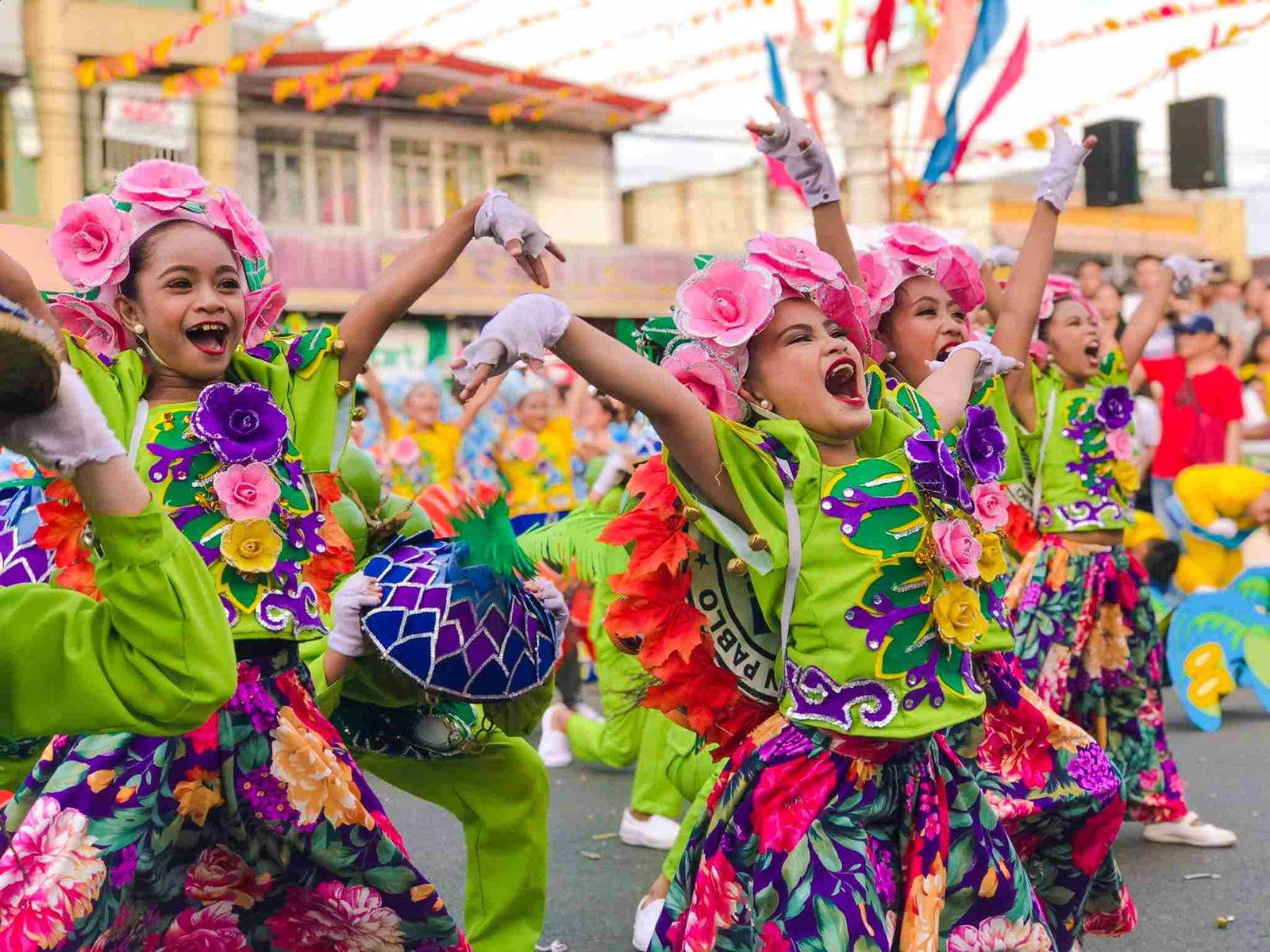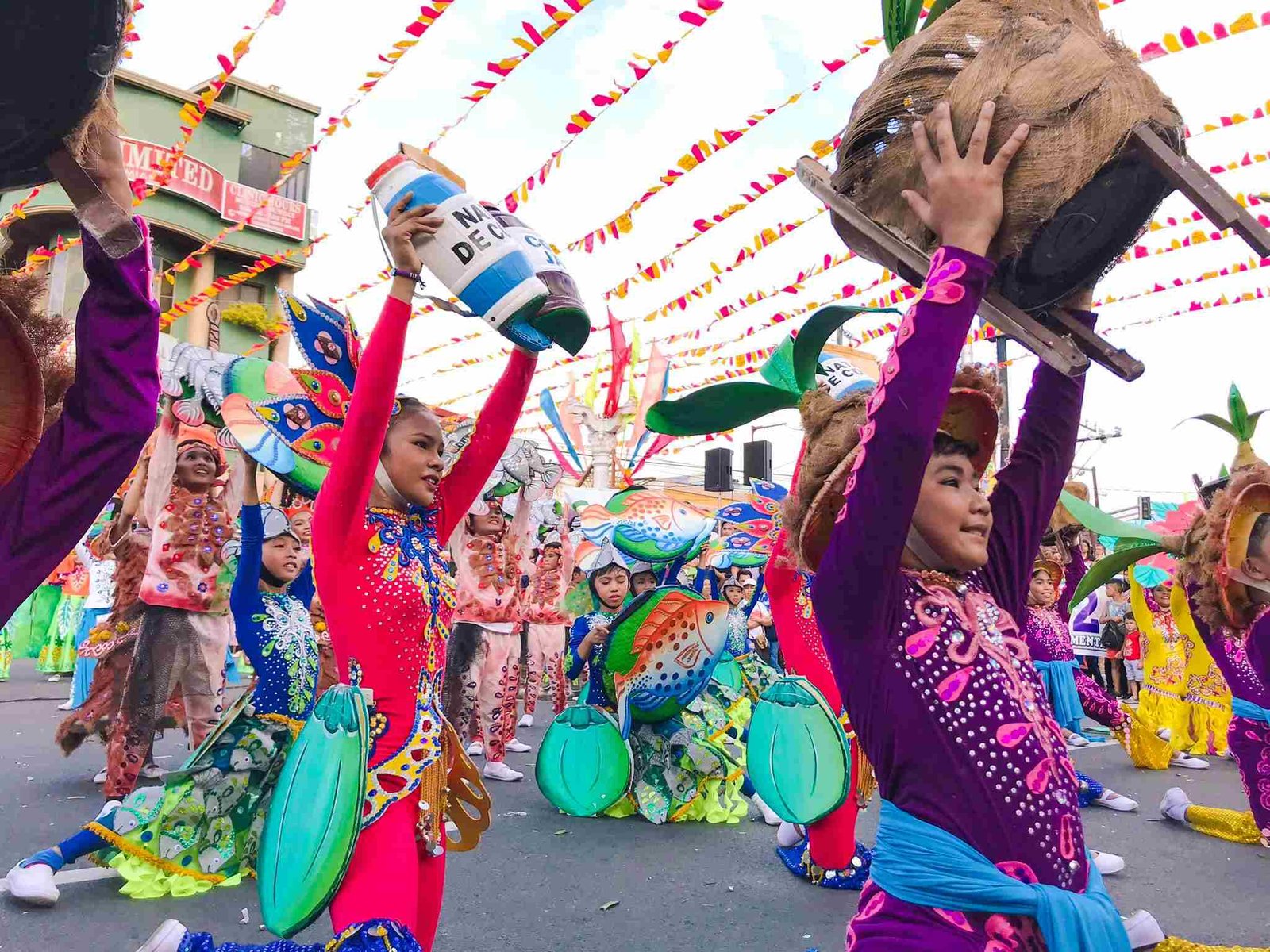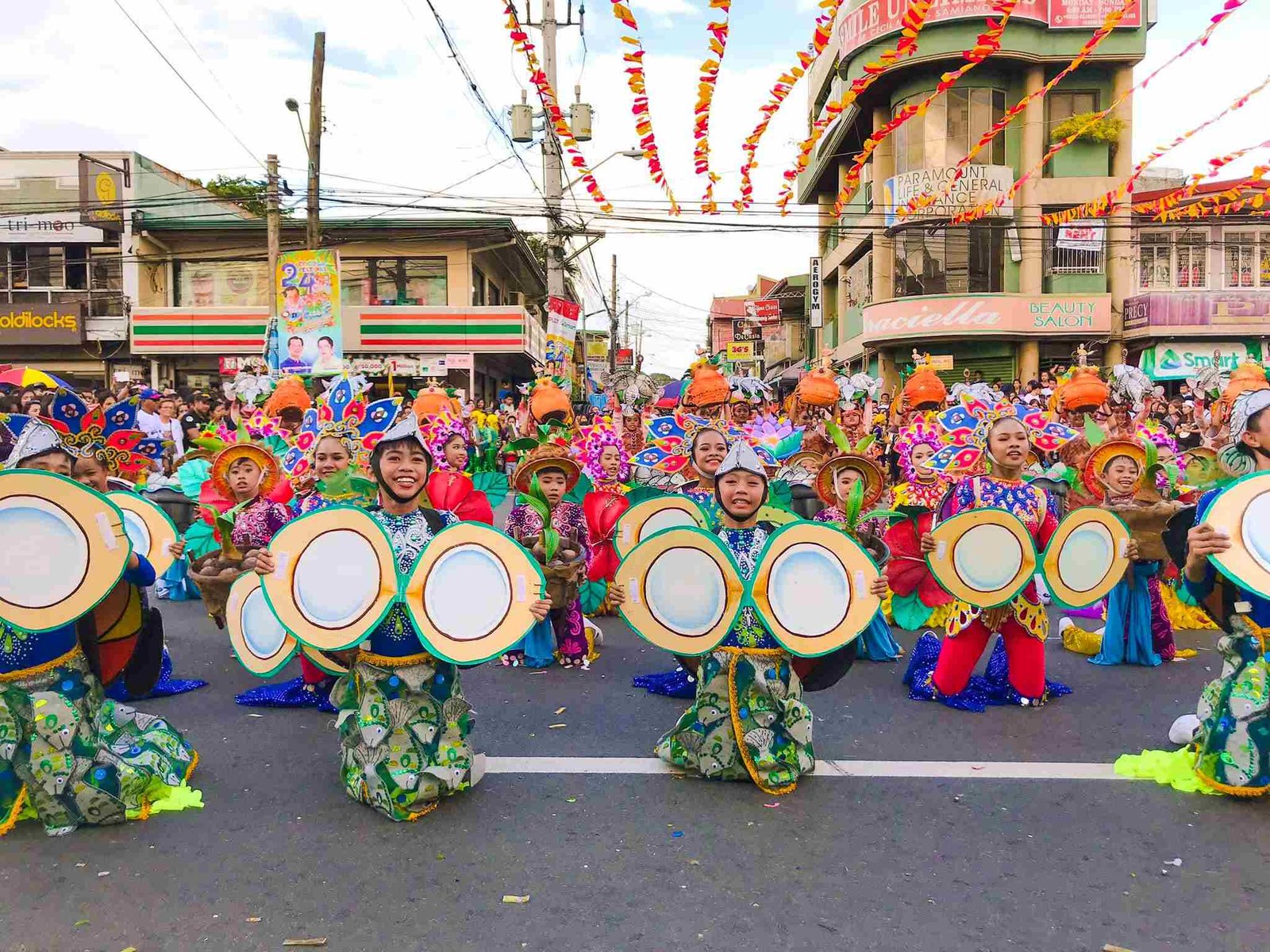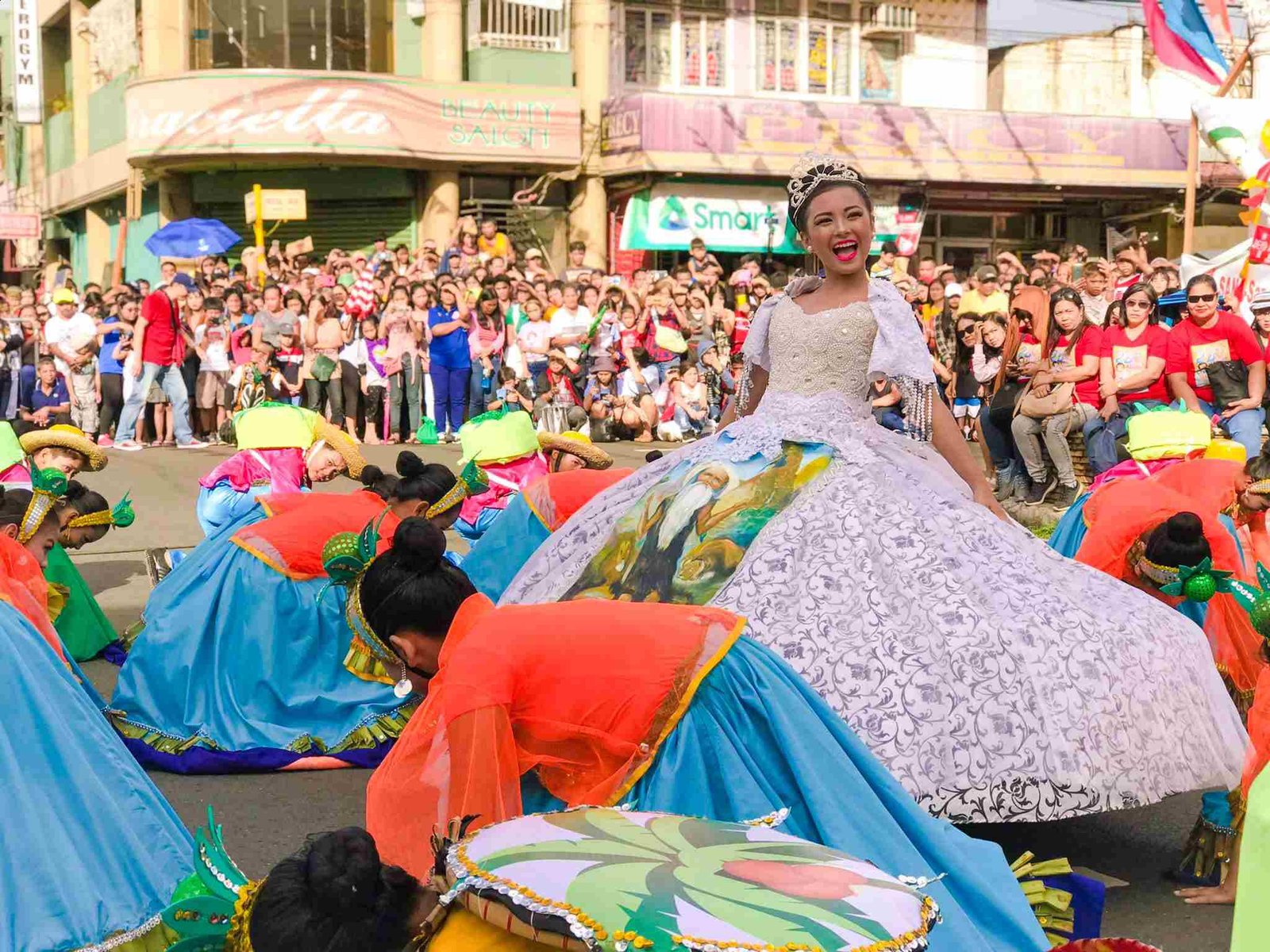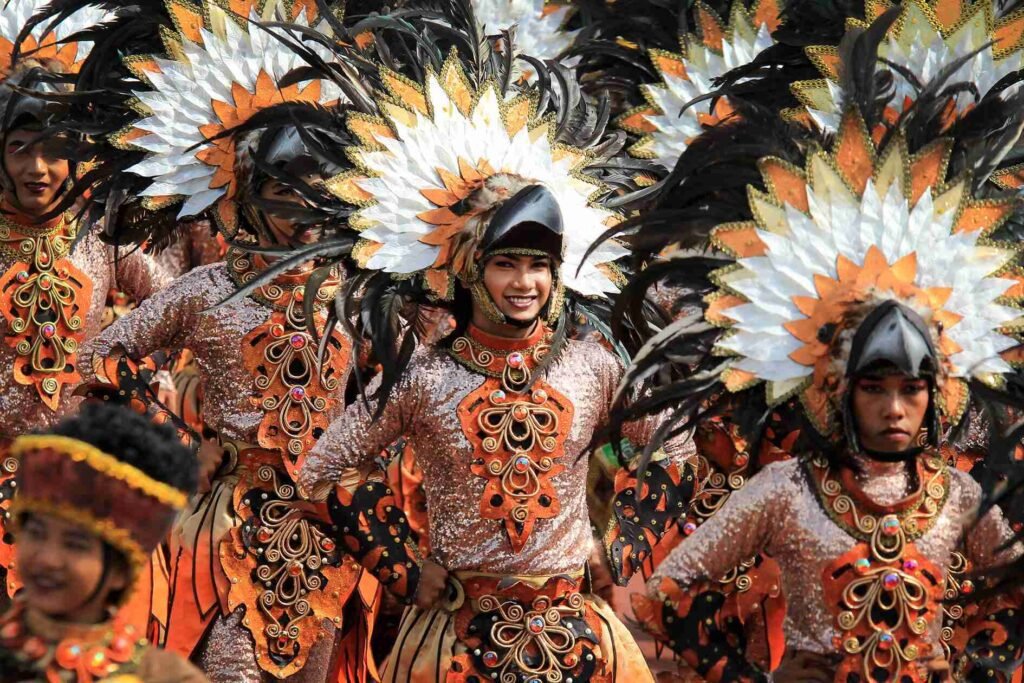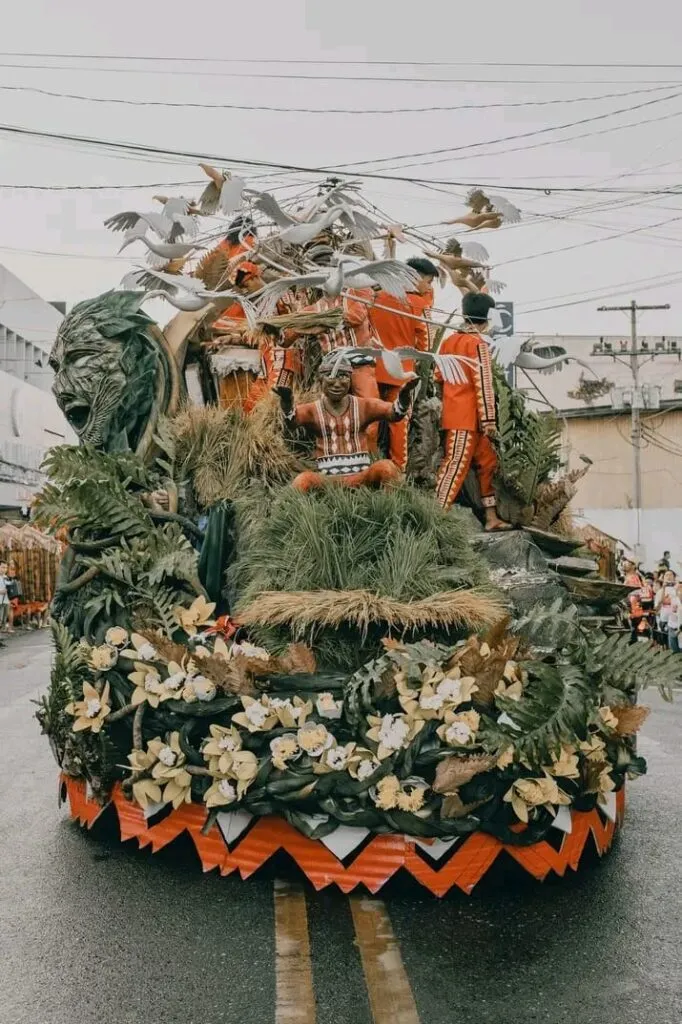The Coconut Festival is a vibrant week-long celebration held annually in San Pablo City, Laguna, Philippines, honoring the city’s patron saint, St. Paul the First Hermit, and celebrating the significance of the coconut industry to the local economy and culture. Initiated in 1996, this festival has become a cornerstone of San Pablo’s cultural identity, drawing visitors from neighboring towns and beyond.
Origins and History of the Coconut Festival
The Coconut Festival was first celebrated on January 12, 1996, coinciding with the 400th anniversary of the founding of the Parish of St. Paul the First Hermit by the Augustinian Fathers in 1596. The festival was conceived to promote San Pablo City and its primary agricultural product, the coconut, often referred to as the “Tree of Life” due to its numerous uses and economic importance. The inaugural event featured street dancing competitions inspired by Bacolod City’s Masskara Festival, with participants donning costumes made predominantly from coconut tree parts.
Table of Contents
Cultural Importance of the Coconut Festival in Laguna
The Coconut Festival in Laguna is more than just a festivity; it’s a testament to the region’s rich cultural tapestry. The coconut holds significant symbolic value in Filipino culture, representing resilience, versatility, and sustenance. Every part of the coconut tree is utilized, from its roots to its leaves, embodying the resourcefulness of the Filipino people. This festival not only celebrates the coconut’s economic contributions but also honors its role in daily life and traditions.
Moreover, the Coconut Festival connects to the broader narrative of Philippine coconut festivals, such as the Niyog-Niyogan Festival in Quezon. These celebrations collectively highlight the coconut’s integral role across various provinces, fostering a shared cultural identity centered around this vital crop.
Key Activities and Highlights of the Coconut Festival
The Coconut Festival is renowned for its dynamic activities that showcase the creativity and unity of San Pablo City’s residents.
-
Coconut Festival Street Dancing
One of the most anticipated events is the Coconut Festival Street Dancing. Participants, often students from local schools, don vibrant costumes adorned with materials derived from the coconut tree. These performances are not only visually captivating but also serve as a medium to narrate stories and traditions, emphasizing the importance of street dancing in showcasing cultural heritage.
For those interested in participating in the Coconut Festival street dancing competition, coordination with local schools or community groups is essential, as they typically organize and train dance contingents for the event.
-
Coconut Festival Float Parade
The Coconut Festival Float Parade is a spectacle of artistry and dedication. Floats are elaborately decorated using various parts of the coconut tree, reflecting themes that resonate with the community’s values and aspirations. The effort involved in creating these floats is immense, with artisans and volunteers collaborating for weeks to produce these moving masterpieces.
Highlights from previous Coconut Festival float parades include floats shaped like mythical creatures, traditional houses, and symbols of prosperity, all ingeniously crafted from coconut materials.
-
Coconut Festival Events
Beyond the parades and dances, the festival hosts a variety of events that cater to diverse interests:
-
Mutya at Lakan ng San Pablo: This pageant crowns the festival’s muse and escort, celebrating beauty, intelligence, and cultural knowledge.
-
Cultural Exhibits and Food Fairs: These showcases offer a deep dive into local artistry and cuisine, allowing visitors to experience the flavors and crafts of San Pablo City.
-
Live Performances: Evenings come alive with performances ranging from traditional music and dance to contemporary acts, providing entertainment for all ages.
-
Interactive Activities: Tourists and locals alike can engage in workshops, games, and contests that highlight the versatility of the coconut and its significance in daily life.
-
In essence, the Coconut Festival in San Pablo City is a multifaceted celebration that honors the coconut’s role in Filipino culture and the community’s unwavering spirit. Through its unique blend of cultural expression, artistic creativity, and communal participation, the festival not only preserves traditions but also fosters a sense of unity and pride among its participants.
Coconut Festival Dates
Traditionally, the Coconut Festival takes place from January 9 to 15, culminating on the feast day of St. Paul the First Hermit. For Coconut Festival 2025, the schedule is expected to follow this pattern, with festivities commencing on January 9, 2025, and concluding on January 15, 2025. Over the years, the festival has evolved, incorporating more elaborate events and activities to engage both locals and tourists. These enhancements have elevated the festival’s profile, making it a significant cultural event in the region.
Best Time to Visit San Pablo City for the Coconut Festival
To fully immerse yourself in the Coconut Festival, plan your visit between January 9 and 15. Arriving a day or two before the festivities begin allows you to acclimate and explore the city before the events start. Here are some tips to enhance your experience:
Accommodation: Book your lodging well in advance, as hotels and guesthouses fill up quickly during the festival week.
Transportation: San Pablo City is accessible via bus or private vehicle from Manila. Ensure you account for potential traffic delays, especially as the festival approaches.
Attire: Wear comfortable clothing and footwear suitable for walking and standing, as many events occur outdoors.
Participation: Engage with local customs and be respectful of cultural practices, especially during religious ceremonies.
Coconut Festival Place of Origin
San Pablo City, often referred to as the “City of Seven Lakes,” is the birthplace of the Coconut Festival. The city’s rich history and abundant coconut plantations make it the ideal location for this annual celebration. The festival not only honors the patron saint but also showcases the versatility of the coconut, a staple in the region’s agriculture and economy. San Pablo’s unique blend of natural beauty and cultural heritage provides a picturesque backdrop for the festivities, enhancing the overall experience for attendees.
The Role of Tourism in the Coconut Festival
The Coconut Festival significantly boosts tourism in San Pablo City, attracting both local and international visitors. The influx of tourists during the festival period stimulates the local economy, benefiting businesses such as hotels, restaurants, and artisans. Moreover, the festival serves as a platform to promote Filipino culture, with events like street dancing, float parades, and cultural exhibits highlighting traditional practices and crafts.
Key Tourist Attractions During the Coconut Festival in San Pablo City
While attending the Coconut Festival, visitors can also explore several attractions in San Pablo City:
Seven Lakes: Discover the city’s famed lakes—Sampaloc, Bunot, Calibato, Pandin, Yambo, Palakpakin, and Muhikap—each offering unique scenic views and recreational activities.
Hacienda Escudero Plantation Resort Town: Experience the richness of a coconut plantation complemented by cultural shows and traditional Filipino hospitality.
San Pablo Cathedral: Visit the historic cathedral dedicated to St. Paul the First Hermit, which plays a central role during the festival’s religious activities.
Attending the Coconut Festival provides a unique opportunity to experience the cultural richness of San Pablo City while contributing to the local economy and gaining a deeper appreciation for Filipino traditions.
Traditional Costumes in San Pablo City’s Coconut Festival
During the festival, participants don elaborate costumes crafted from different parts of the coconut tree, including shells, leaves, husks, and fibers. These costumes are not only visually stunning but also serve as a tribute to the coconut’s versatility and importance in the region. The use of coconut materials in attire underscores the community’s ingenuity and deep-rooted connection to this vital crop.
Coconut Festival Street Dancing
A highlight of the festival is the street dancing competition, where performers showcase traditional dances while wearing their coconut-inspired costumes. These vibrant performances are accompanied by indigenous music, creating an energetic atmosphere that captivates both locals and tourists. The street dancing serves as a platform to display cultural traditions and the artistic talents of San Pablo City’s residents.
Coconut Festival Float Parade
The float parade is another anticipated event, featuring creatively designed floats adorned with coconut elements. Each float reflects themes related to the coconut industry, local legends, or cultural symbols, demonstrating the artistry and effort of the community. The parade not only entertains spectators but also educates them about the cultural and economic significance of the coconut.
Mutya at Lakan ng San Pablo
The “Mutya at Lakan ng San Pablo” pageant is a key event that crowns the festival’s muse and escort, celebrating beauty, intelligence, and cultural knowledge. This pageant highlights the grace and poise of the city’s youth, promoting cultural pride and community involvement.
Cultural Exhibits and Food Fairs
Throughout the festival, various exhibits and fairs showcase local crafts, delicacies, and products derived from coconuts. Visitors have the opportunity to experience the flavors and artistry of San Pablo City, deepening their appreciation for the region’s cultural and agricultural heritage.
Coconut Festival 2025: Schedule of Events
For Coconut Festival 2025, the festivities are expected to follow the traditional schedule, commencing on January 9 and culminating on January 15, the feast day of St. Paul the First Hermit. The lineup includes:
- January 9: Opening ceremonies and cultural presentations.
- January 10-14: Street dancing competitions, float parades, and nightly cultural shows.
- January 15: Feast day celebrations, religious processions, and the “Mutya at Lakan ng San Pablo” coronation.
Special features planned for this year’s celebration may include eco-friendly initiatives, such as promoting sustainable practices in costume and float materials, to enhance environmental awareness.
Significance of Cocofest in the Philippines
The Coconut Festival, also known as Cocofest, plays a crucial role in promoting cultural heritage and environmental consciousness. By celebrating the versatility of the coconut, the festival underscores its importance in Filipino traditions and its contribution to the local economy. Cocofest fosters community pride and unity, making it a must-see event for both locals and tourists.
How to Participate in the Coconut Festival Street Dancing Competition
Registration and Preparation for Performers: Participation in the street dancing competition is typically organized through local schools and community groups. Interested individuals should coordinate with these institutions to join a contingent. Preparation involves rigorous rehearsals and costume creation, often utilizing materials from the coconut tree to reflect the festival’s theme.
Tips for Spectators:
- Optimal Viewing Spots: Arrive early to secure a good spot along the main parade routes, as these areas can become crowded.
- Comfort Essentials: Wear comfortable clothing and bring essentials like water, sunscreen, and hats to stay protected during the outdoor events.
- Engage with Locals: Interacting with residents can provide deeper insights into the cultural significance of the performances.
Conclusion
The Coconut Festival in San Pablo City is a unique and meaningful event that showcases the rich cultural heritage of the Philippines. It offers visitors an opportunity to experience traditional dances, vibrant costumes, and the communal spirit of the local population. Attending the festival not only provides entertainment but also supports the preservation and celebration of Filipino culture.
We invite you to visit San Pablo City and participate in the Coconut Festival 2025. Engaging in this festivity allows you to witness firsthand the traditions that make this celebration special. By joining the festival, you contribute to the ongoing efforts to preserve and promote the rich cultural tapestry of the Philippines.
For a glimpse of the festival’s vibrant atmosphere, you might enjoy this video showcasing the street dancing competition:
Frequently Asked Questions (FAQ) about the Coconut Festival in San Pablo City, Laguna
1. What is the Coconut Festival?
The Coconut Festival, also known as “Cocofest,” is an annual week-long celebration in San Pablo City, Laguna, Philippines. It honors the city’s patron saint, St. Paul the First Hermit, and celebrates the significance of the coconut industry to the local economy and culture. The festival features street dancing, float parades, cultural presentations, and various community events.
2. When is the Coconut Festival held?
The festival typically takes place from January 9 to 15 each year, culminating on January 15, which is the feast day of St. Paul the First Hermit. For the most accurate and up-to-date schedule, it’s recommended to check with local authorities or official festival announcements.
3. Where is the Coconut Festival celebrated?
The festival is celebrated in San Pablo City, located in the province of Laguna, Philippines. San Pablo is known as the “City of Seven Lakes” and is situated approximately 80 kilometers south of Manila.
4. What are the main activities during the festival?
Key activities include:
Street Dancing Competitions: Participants, often from local schools, perform choreographed dances in vibrant costumes made from coconut materials.
Float Parades: Elaborately decorated floats, showcasing themes related to the coconut industry and local culture, parade through the city’s main streets.
Cultural Exhibits and Food Fairs: These events highlight local crafts, delicacies, and products derived from coconuts, offering visitors a taste of San Pablo’s heritage.
Mutya at Lakan ng San Pablo Pageant: A beauty pageant that crowns the festival’s muse and escort, celebrating beauty, intelligence, and cultural knowledge.
5. How can I participate in the street dancing competition?
Participation is typically organized through local schools and community groups. Interested individuals should coordinate with these institutions to join a contingent. Preparation involves rehearsals and creating costumes, often utilizing materials from the coconut tree to reflect the festival’s theme.
6. Are there any special preparations needed for visitors?
Accommodation: Book lodging well in advance, as hotels and guesthouses fill up quickly during the festival week.
Transportation: San Pablo City is accessible via bus or private vehicle from Manila. Plan your travel to account for potential traffic delays, especially as the festival approaches.
Attire: Wear comfortable clothing and footwear suitable for walking and standing, as many events occur outdoors.
7. What is the historical significance of the festival?
Initiated in 1996, the Coconut Festival was conceived to promote San Pablo City and its primary agricultural product, the coconut. The festival serves as a thanksgiving for the bountiful harvest and honors the patron saint, St. Paul the First Hermit.
8. How does the festival impact local tourism and economy?
The Coconut Festival significantly boosts tourism in San Pablo City, attracting both local and international visitors. The influx of tourists stimulates the local economy, benefiting businesses such as hotels, restaurants, and artisans. The festival also serves as a platform to promote Filipino culture, with events highlighting traditional practices and crafts.
9. Are there other attractions to visit in San Pablo City during the festival?
Yes, visitors can explore several attractions:
Seven Lakes: Discover the city’s famed lakes—Sampaloc, Bunot, Calibato, Pandin, Yambo, Palakpakin, and Muhikap—each offering unique scenic views and recreational activities.
San Pablo Cathedral: Visit the historic cathedral dedicated to St. Paul the First Hermit, which plays a central role during the festival’s religious activities.
10. How can I get more information about the festival?
For the latest updates and detailed information, contact the San Pablo City Tourism Office or visit official city websites and social media pages. Local news outlets also provide coverage leading up to and during the festival.
We hope this FAQ helps you plan your visit and fully enjoy the Coconut Festival in San Pablo City!

